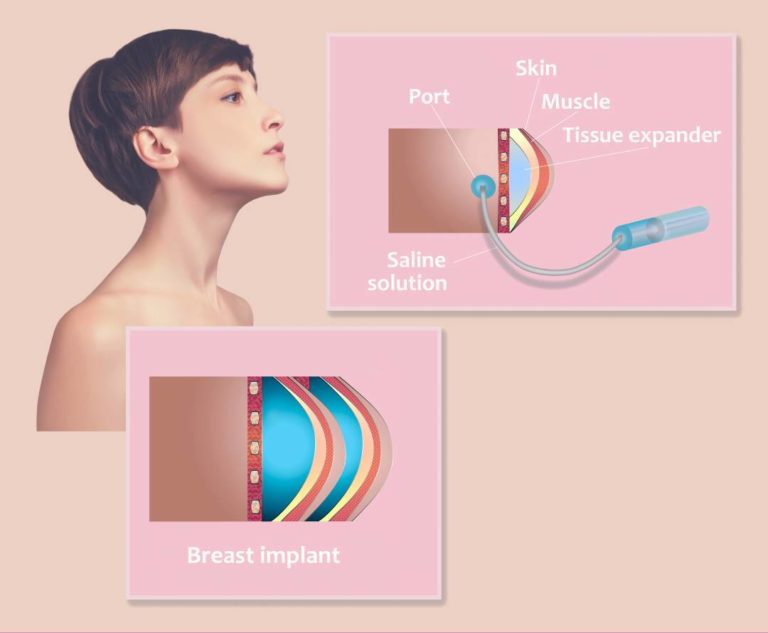
Surviving breast cancer is no small accomplishment. But for some women, regaining their health is only half the battle. Because it’s hard to feel your best until you look your best. If you have your mindset on breast reconstruction, you will need some solid information before making a decision about which options are best for you. One of the most popular and common types of reconstruction is implant reconstruction. This often involves something called breast tissue expanders.
Tissue expansion is a type of breast reconstruction commonly used for mastectomy patients. It involves expanding the breast skin that remains after a skin sparing mastectomy with the use of a tissue expander. The breast tissue expander itself is more like a balloon than an implant. Its job is to stretch the skin to provide room for the eventual breast implant.
What are breast tissue expanders?
After the mastectomy, the plastic surgeon inserts a deflated tissue expander. After a short while of healing the incisions, the patient usually visits the office where air or saline can be injected into the tissue expander to increase the volume and slowly stretch the skin over time. In a second surgery, the tissue expanders are removed and a more permanent silicone or saline implant is placed.
How It Works
There is a port on the breast tissue expander, which can be either metal or plastic, allowing your surgeon to gradually add either saline water or air. The entire process can take up to three to four months and stretches the skin and tissue so that it can accommodate an implant.
Breast Tissue Expanders FAQ
Here are a few common questions about breast tissue expanders:
How long does the procedure take?
Breast tissue expander reconstruction immediately following a mastectomy normally takes about two to four hours to complete.
Why are multiple expansions necessary?
The expansion process has been well thought out to increase both patient comfort and the effectiveness of the procedure. Gradually expanding the tissue expander is more comfortable for the patient allowing for a better experience with healing and maintaining daily activities.
Where would the resultant scar be found?
The scar following this type of reconstruction normally depends upon the mastectomy scar. The same scar that is used for the mastectomy is typically also the access point for implant based reconstruction. This way the final scarring is as minimal as possible.
How long will it take for me to recover?
After your procedure, you will return home and will most likely need to take pain medication and antibiotics. Plan on taking around four to six weeks off from work for full healing. Avoid vigorous physical activity for at least six weeks after your procedure.
You can resume most of your normal activities within a few days after your procedure. You should get up and move around within 24 hours after your surgery to avoid developing a blood clot.
As a breast cancer survivor, you know how important it is to get plenty of rest. For the first week or two, you will need some help around the home. No matter who is responsible for household chores, you will be in no position to do many of them and will need others to help. Stay focused on eating healthy meals. Be sure to remain hydrated and increase your walking gradually.
Post-surgical swelling will continue decreasing in the weeks following your breast reconstruction surgery. We can offer recommendations on when you can begin range-of-motion exercises for the prevention of shoulder stiffness, as well as anything else that you may need to assist you in your recovery.
Do you have any remaining questions or concerns? If so, please contact the office of Dr. Haque of Queen City Plastic Surgery today to schedule your convenient consultation or use our simple online form.
